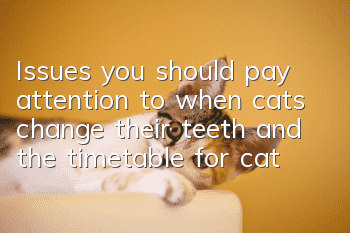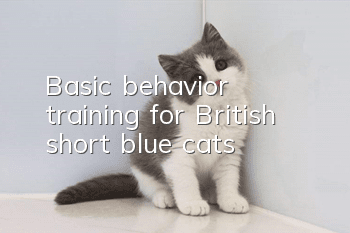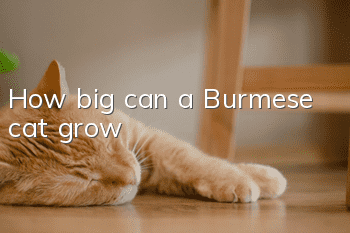Issues you should pay attention to when cats change their teeth and the timetable for cat teeth change

Many people have questions, do cats change teeth? The answer is that cats change teeth, but many careless owners do not pay attention to the situation when cats change teeth. It is best for owners to pay attention to cats when they change teeth, so as to prevent cats from improperly changing teeth and causing long-term problems. Double rows of teeth affect the cat’s health.
1. Cat teeth changing
Cats also change their teeth! Like people, the growth and development of cat teeth also goes through two stages, namely the deciduous tooth stage and the permanent tooth stage. In the deciduous tooth stage, cats have 26 teeth. In the permanent tooth stage, cats will have 30 teeth, with the extra two molars at the top and bottom.
The growth and replacement of a cat’s teeth are very regular. By observing the cat’s teeth, you can often roughly estimate the cat’s age. Generally, cats that are three to four weeks old will have deciduous canine teeth (that is, two canines on the upper and lower jaws) and small incisors on the upper jaw. By the fifth week, all the deciduous teeth will have grown.
Starting from the fifth month after birth, cats begin to replace their canine teeth. At this time, when you open the cat’s mouth, you can often see that the gums of the cat’s canine teeth are slightly red. This is a sign that new teeth are about to grow. After a week or two, you will see four canine teeth on the cat's upper or lower jaw, that is, there are two teeth at the same canine position, one is slightly larger, and these are the newly grown teeth. As new teeth grow, the primary canine teeth are slowly loosened, fallen off, and spit out by the cat. If you observe carefully, you may pick up the cat’s baby teeth. Keeping the cat’s deciduous teeth can also be regarded as a kind of souvenir!
When a cat is four or five months old, it may have a loss of appetite during the teething stage. At this time, on the one hand, you need to pay attention to the growth of the teeth in the cat’s mouth, and on the other hand, you need to provide it with easy-to-chew food. To protect new teeth.
One year after a kitten is born, the incisors on the lower jaw begin to wear out, and after seven years, the canine teeth gradually age. In the seventh year, the incisors of the lower jaw are ground into a round shape; in a ten-year-old cat, all the incisors of the upper jaw are gone. Careful cat owners, by observing the changes in their cats’ teeth, should prepare different foods for their cats to benefit their cats’ health.
2. Things you should pay attention to when cats change their teeth
Many cats like to bite things when their teeth are changing, or simply hold their owners’ hands and bite them back and forth, just like children. If you don't like being bitten, the solution is to apply toothpaste that she doesn't like on the places she likes to bite, such as her hands and arms. She won't bite because she hates the taste!
3. Cat teeth changing schedule
The first primary incisor grows out in 2-3 weeks
The second primary incisor erupts in 3-4 weeks
The third primary incisor grows out at 3-4 weeks
FirstIncisors erupt in 3.5-4 months (teeth replacement)
The second incisor grows in 3.5-4 months (tooth replacement)
The third incisor grows in 4-4.5 months
Primary canine teeth grow out in 3-4 weeks
Canine teeth erupt in 5 months (tooth replacement)
The first milk premolars erupt in 2 months (on the upper jaw, but not on the lower jaw)
Second milk premolars grow out in 4-6 months
The third milk premolars grow out in 4-6 months
The first premolars grow out in 4-5 months
The second premolars grow out in 5-6 months
The third premolars grow out in 5-6 months
After reading the above content, do owners have a certain understanding of how cats change teeth and when they change teeth? In fact, when cats change teeth, most of their teeth are swallowed by themselves. If you are lucky enough to collect the cat’s deciduous teeth , that's really lucky.
- Will Ragdoll cats’ fur become darker in winter?
- What kind of special litter box should be prepared for pet cats?
- Why do cats eat dead leaves?
- Is it good to neuter male cats?
- Is it okay for cats to eat one kind of cat food for a long time?
- Will impure folded-eared cats get sick?
- Do cats cry after being abandoned?
- Symptoms and treatments for spontaneous cystitis in cats
- Can hair in a cat's eye come out on its own?
- How to change a timid cat?



